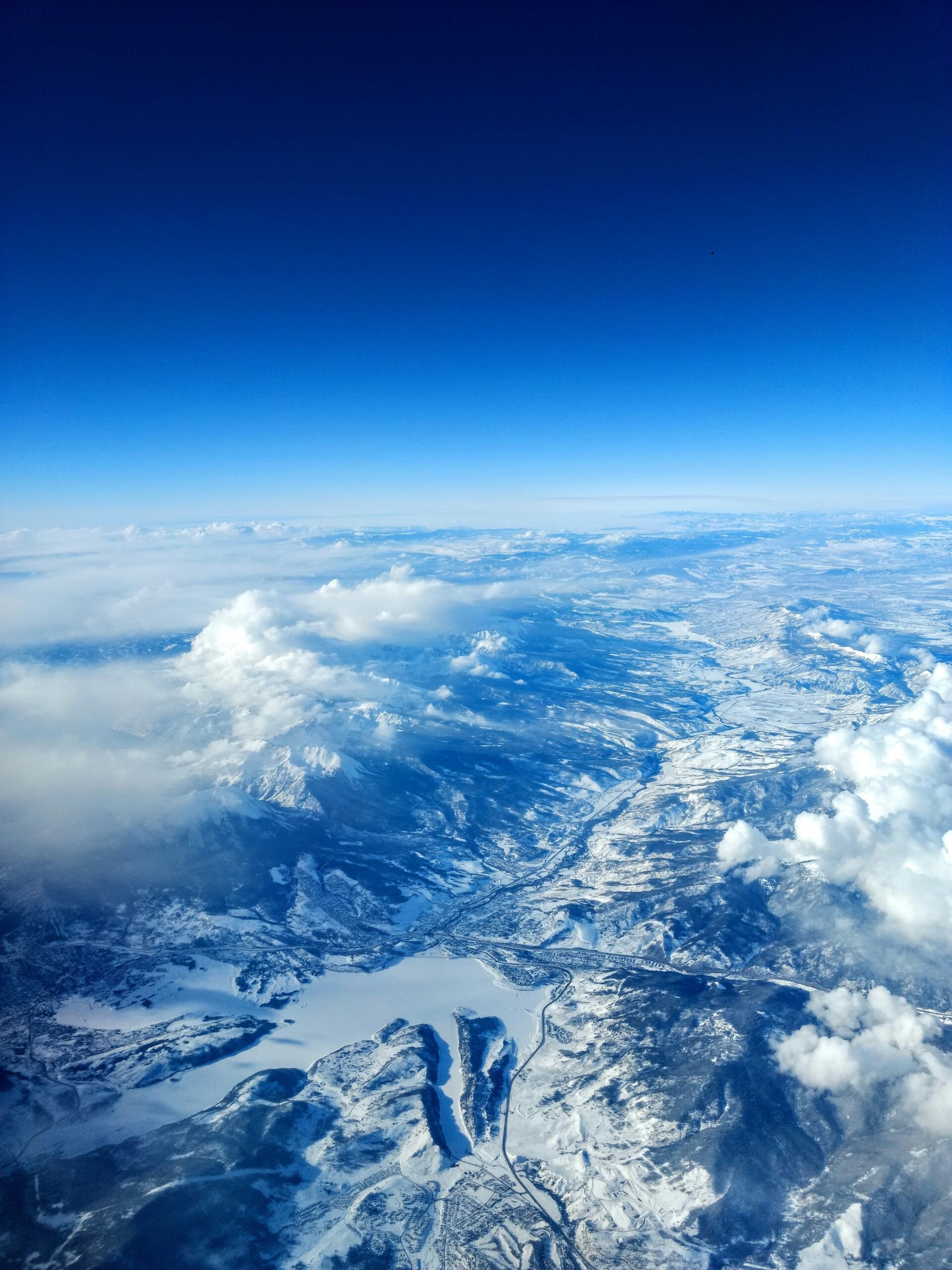Have you ever wondered how the elevation of a place can influence its weather patterns? Mount Shasta City, a quaint community nestled in Northern California, serves as an intriguing example of how geography and altitude can shape local climate. The city sits at an elevation of about 3,600 feet (approximately 1,100 meters) above sea level, and this elevated position plays a key role in determining its weather conditions. Through a friendly exploration, let's delve into the nuances of how the elevation of Mount Shasta City affects its weather, providing insights that will help you better grasp the intricate dance between geography and climate.

Understanding Elevation's Role in Weather
Before we delve deeper into Mount Shasta City's specifics, it’s important to understand how elevation generally affects weather. The elevation of a region refers to its height above sea level. As you ascend to higher altitudes, the atmospheric pressure decreases. This is because there is less air above you exerting pressure. This decrease impacts temperature and precipitation levels, which in turn influences the local climate.
Temperature and Elevation
You might be curious to know how elevation affects temperature. As a general rule, temperature decreases with an increase in elevation. For every 1,000 feet (about 300 meters) you ascend, the temperature drops by roughly 3.5 degrees Fahrenheit (or about 2 degrees Celsius). This phenomenon is why you’ll find cooler temperatures on the peaks of mountains compared to their bases.
Precipitation and Elevation
Elevation can also impact precipitation. As air rises and cools, it loses its ability to hold moisture, leading to cloud formation and precipitation. This is often why mountainous areas receive more rainfall or snowfall compared to their surrounding lowlands. Essentially, the elevated topography can force air to rise, which then cools and releases moisture in the form of rain or snow.
Mount Shasta City: A Unique Geographical Setting
Mount Shasta City is uniquely positioned at the base of the majestic Mount Shasta, a potentially active stratovolcano, standing at 14,179 feet (4,322 meters). The city’s elevation and proximity to this volcanic giant significantly influence its climate. Let’s break down how this comes into play.
The Impact of Proximity to Mount Shasta
Mount Shasta itself plays a critical role in shaping the weather patterns experienced in the city. Its towering presence affects wind patterns, precipitation distribution, and even the amount of sunlight that reaches different areas. The mountain acts as a barrier, creating a rain shadow effect on the eastern side, which means the city sometimes receives different amounts of precipitation depending on where you are positioned in relation to Mount Shasta.
Influence of Latitude and Altitude
In understanding Mount Shasta City's climate, your focus should not only be on elevation but also on its geographical latitude. The city lies close to the 41st parallel north, which contributes to its weather characteristics. Its latitude dictates the angle and intensity of solar radiation received throughout the year, interacting with the elevation to produce distinctive climatic patterns.
Detailed Weather Patterns in Mount Shasta City
Now that you have a basic understanding of how elevation influences weather, let’s look at the specific climate characteristics of Mount Shasta City. This will provide a clearer picture of how all these factors come together to create unique local weather conditions.
Seasonal Temperature Variations
Mount Shasta City experiences a variety of temperatures throughout the year. Winter months can be cold, with temperatures often dipping below freezing, particularly because of the higher altitude. During summer, the temperatures are milder and enjoyable, providing a respite from the heat experienced in many lower-elevation areas. The city’s elevation tempers the temperatures, offering cooler conditions than nearby lower-level areas.
Precipitation Patterns
Rain and snow are frequent visitors in Mount Shasta City, largely due to its elevation and the surrounding mountain terrain. The city receives an average annual precipitation of about 40 inches (approximately 1,000 mm), with the majority falling as snow during the winter months. This snow accumulation provides crucial water resources for the region as it melts in the warmer months.
Wind Dynamics
You'll find that wind plays a significant role in the weather of Mount Shasta City. The elevation, combined with the expansive Mount Shasta, affects wind direction and speed. Mountainous terrain influences airflow, creating unique patterns where winds can be funneled through valleys and gaps, often increasing their speed.
The Microclimates of Mount Shasta City
Microclimates in Mount Shasta City add another layer of complexity to its weather. These are small areas where the climate differs slightly from the surrounding area due to various factors like vegetation, topography, and human activity.
Influence of Topography on Microclimates
Topography contributes significantly to the variety of microclimates around Mount Shasta. Areas closer to the mountain's foothills may experience slightly cooler and wetter conditions due to orographic lift—where moist air is forced upward by the terrain, cooling and causing precipitation. Conversely, regions in a rain shadow area might be drier. Understanding these microclimates is essential for agriculture, outdoor activities, and even daily life around the mountain.
Vegetation and Land Use
Vegetation also plays a part in influencing local microclimates. Forested areas offer shade and cooler temperatures during the summer months, while open lands can heat up more quickly. In addition, human activities, like urban development or agriculture, can create microclimates by altering the natural landscape and affecting factors like heat retention and wind flow.

Comparing with Other Locations
To really grasp how elevation affects the weather, it can be useful to compare Mount Shasta City with other locations at different elevations. By doing so, you can better appreciate the unique climatic features bestowed upon the city by its elevation.
Mount Shasta City vs. Lower Elevation Cities
Consider cities at lower elevations, such as Sacramento, California, which sits at only 30 feet (about 9 meters) above sea level. In this comparison, Mount Shasta City’s elevated position results in cooler temperatures and more snowfall, while Sacramento experiences milder winters and hotter summers with more consistent rainfall due to its proximity to the ocean.
High Elevation Comparisons
For contrast, compare Mount Shasta City with a locale like Leadville, Colorado, which resides at a higher elevation of about 10,152 feet (3,094 meters). Leadville experiences much colder temperatures year-round, with shorter growing seasons and even more snowfall than Mount Shasta City due to its greater elevation. This comparison shows that as elevation increases, the climatic conditions can become even more extreme.
How the Weather Impacts Life in Mount Shasta City
The weather patterns created by Mount Shasta City's elevation affect many aspects of life, from daily routines to economic activities. Understanding these impacts can shed light on how integral the weather is to the community's way of life.
Outdoor Activities and Tourism
The diverse weather throughout the year attracts outdoor enthusiasts to Mount Shasta City, offering activities from skiing and snowboarding in winter to hiking and fishing in summer. The elevation-driven weather makes it a year-round destination, but it also requires preparedness from visitors.
Agriculture and Natural Resources
Elevation-induced climate conditions also influence local agriculture. Shorter growing seasons and frost susceptibility mean farmers must be strategic about crop choices. Moreover, the snowmelt from Mount Shasta serves as a crucial water source, supporting both the local ecosystem and agricultural needs.
Urban Planning and Infrastructure
Mount Shasta City's elevation and weather conditions must be accounted for in urban planning. Snowfall and variable temperatures require specific infrastructure considerations, such as efficient snow management systems and durable road materials. Furthermore, the microclimates need to be considered when developing new residential or commercial areas.

Adapting to Weather Challenges
Living in or visiting Mount Shasta City means adapting to the unique weather conditions created by its elevation. These adaptations are essential for ensuring safety and enjoying the local environment to its fullest.
Preparing for Winter
Winter preparation in Mount Shasta City typically involves securing supplies and ensuring adequate heating. Vehicles often require snow tires or chains, and homes must be equipped to handle snow accumulation and low temperatures.
Embracing the Varied Seasons
Residents and visitors alike can benefit from embracing the city's varied seasons by engaging in appropriate seasonal activities. This flexibility ensures that you can make the most of all that Mount Shasta City has to offer, regardless of the time of year.
Conclusion
The elevation of Mount Shasta City profoundly influences its weather, bringing about unique climate characteristics that shape the life and lifestyle in this picturesque area. By understanding how elevation impacts weather—through temperature variations, precipitation patterns, and wind dynamics—you gain a deeper appreciation for the intricate relationship between geography and climate. As you reflect on these insights, you might find yourself more attuned to the subtle nuances of the natural world, inspired by the way elevation so beautifully intertwines with the weather in Mount Shasta City.
